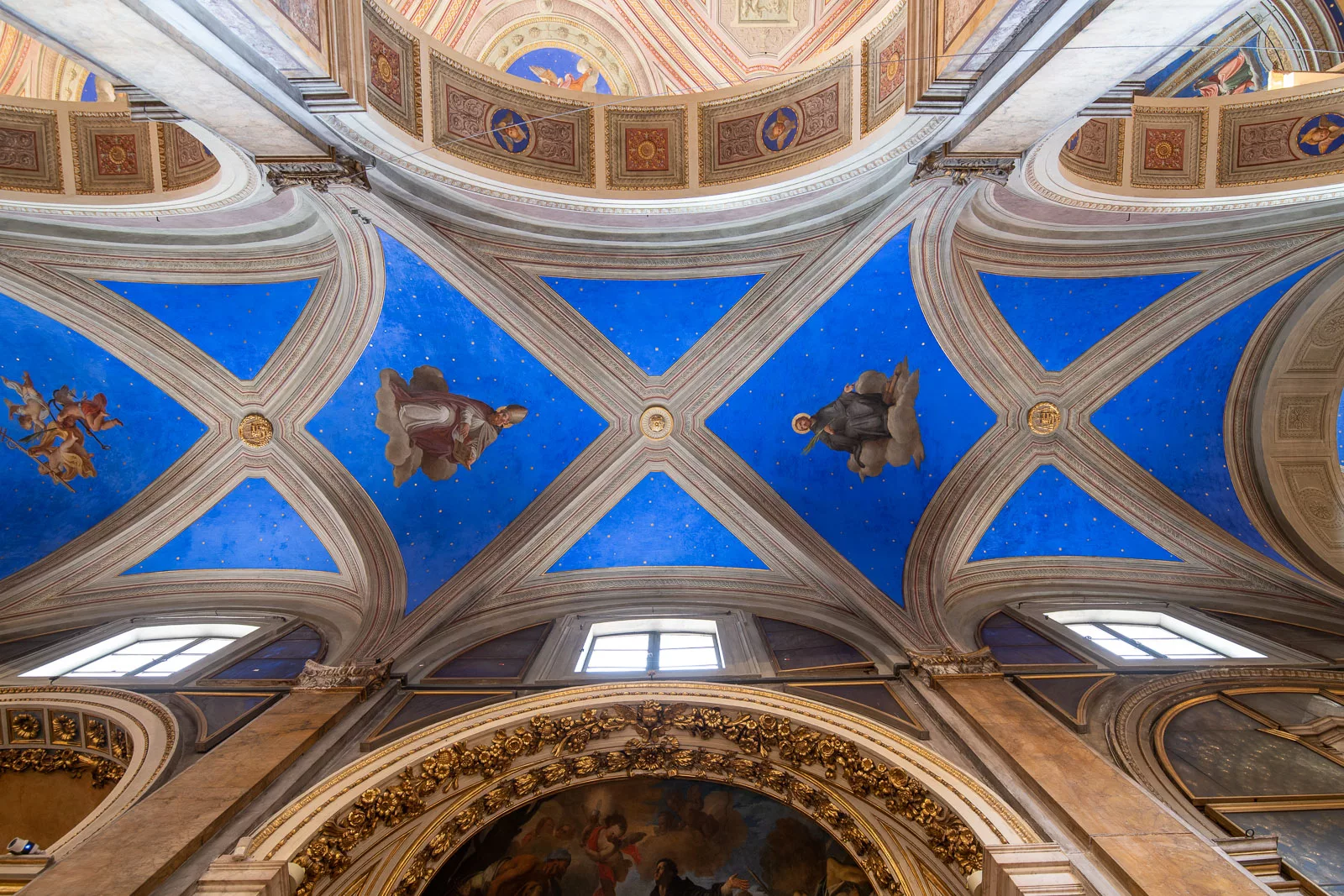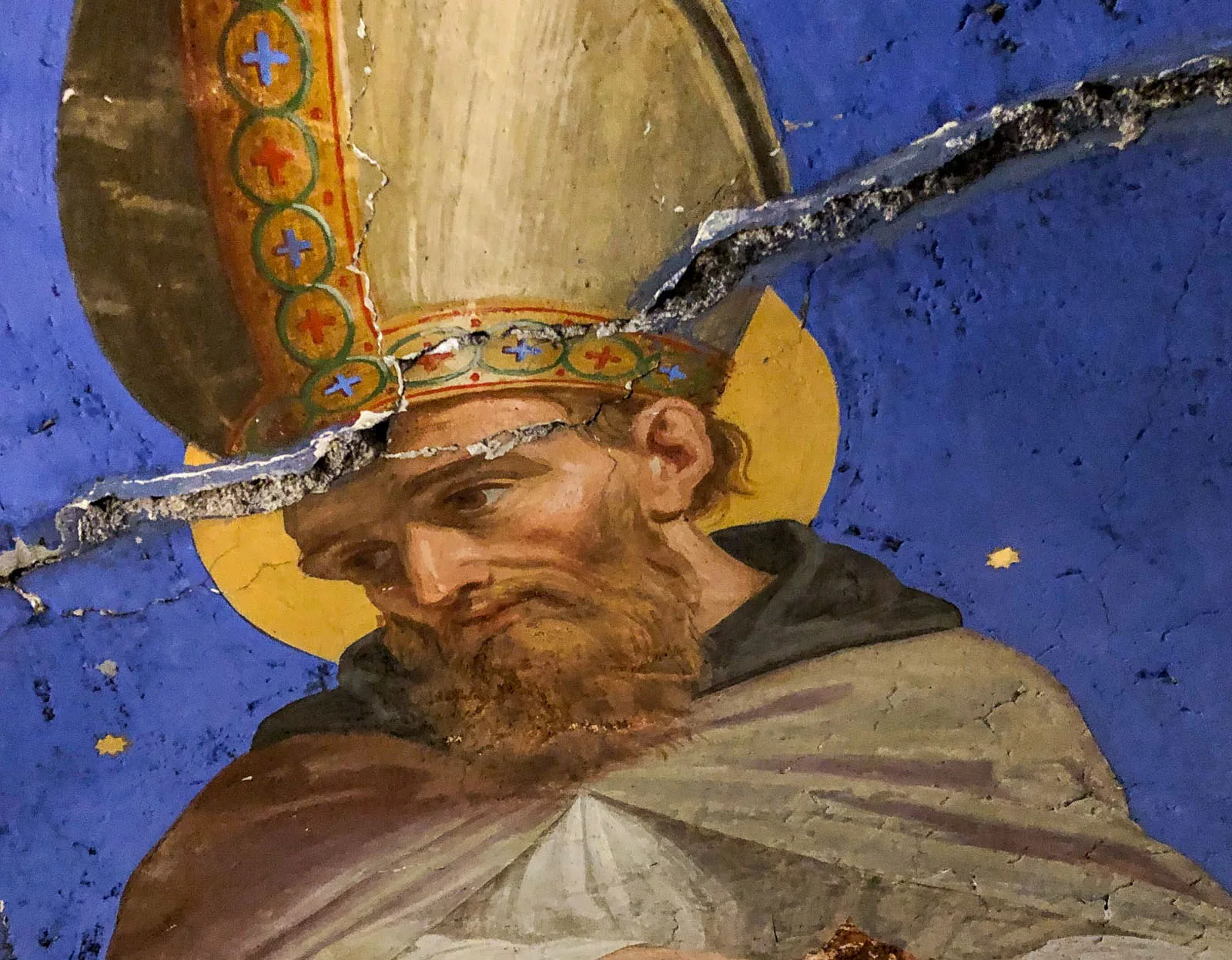Sant’Agostino, Rome
The structural consolidation and artistic restoration of the Basilica of Sant’Agostino.
2020 – 2021
OVERVIEW
Emergency works on the internal and part of the external roofing lesions and structural consolidation of the vaults of the left aisle
CLIENT
Soprintendenza Speciale Archeologia Belle Arti e Paesaggio di Roma
LOCATION
Rome, Lazio
PROJECT DESCRIPTION
The Edilerica company has successfully completed the securing and restoration of the left side aisle of the Basilica of St. Augustine in Campo Marzio, under the supervision of the Ministry of Culture and the Special Archaeology, Fine Arts and Landscape Superintendence of Rome.
The work, divided into two separate periods, involved adetailed analysis of structural injuries and a series of targeted interventions to ensure the safety and recovery of the pictorial apparatus.

Structural intervention
During the initial phase, following the detachment of fragments and small portions of plaster, scaffolding was erected to closely examine the lesions in the vaults of the left aisle. The lesions, mainly longitudinal with some branching, have been attributed to seasonal cyclical movements and the 2016 earthquake event. To ensure structural safety, deep and systematic injections of the lesions with lime-based products were performed.
Due to the presence of decorations, preliminary washing of the lesions could not be performed. Therefore, the consolidating product (superfluid hydraulic filler binder) identified for the structural consolidation of the vault, already successfully used to restore lesions in the vaults of the Basilica of Assisi, containing cellulose fibers that retained the water of the ‘mixture, allowed a hardening reaction of the mortar without the need for prior wetting of the lesions present, avoiding the risk of damaging the decorations present in the intrados.
Injections were made from both the extrados and intrados to ensure complete filling of the lesions (after grouting the lesions in the intrados by inserting witness tubes to signal complete saturation of the treated lesion). The extrados surface was perforated to allow injection, while the intrados surface was treated with progressive mortar injections.
Conservation Restoration
After structural consolidation, restoration work was carried out. The wall decorations, probably tempera, had defects in cohesion and adhesion, with salt efflorescence and color washout.
Restoration operations involved dusting the surface, applying suitable consolidating products, and grouting cracks and falling plaster layers. Consolidation of the center nails was performed from both the extrados and intrados, with special attention to the areas affected by detachment.
In addition, under-level reconstruction of the arch frames and cleaning of the paintings were carried out with the application of surface treatments necessary for the recovery of the pictorial apparatus.

Instrumental monitoring
Throughout the process, the instrumental monitoring system was reactivated and integrated into the structure of the Basilica. Laser distance meters and potentiometric displacement transducers were used to record any structural movements. The collected data will be further analyzed at the end of the seasonal thermal cycle to evaluate the effectiveness of structural interventions. Thanks to the interventions carried out, the Basilica of St. Augustine in Campo Marzio has now restored its structural safety and the beauty of its wall paintings, thus preserving the cultural and artistic heritage of the Eternal City.
Photo reportage

